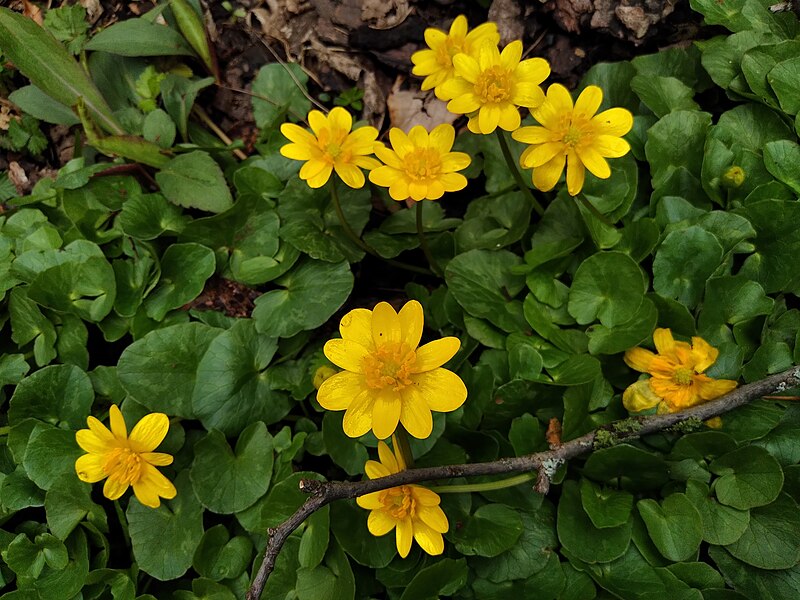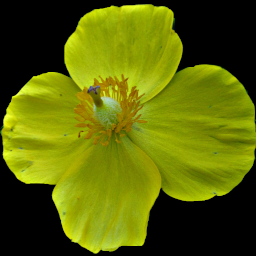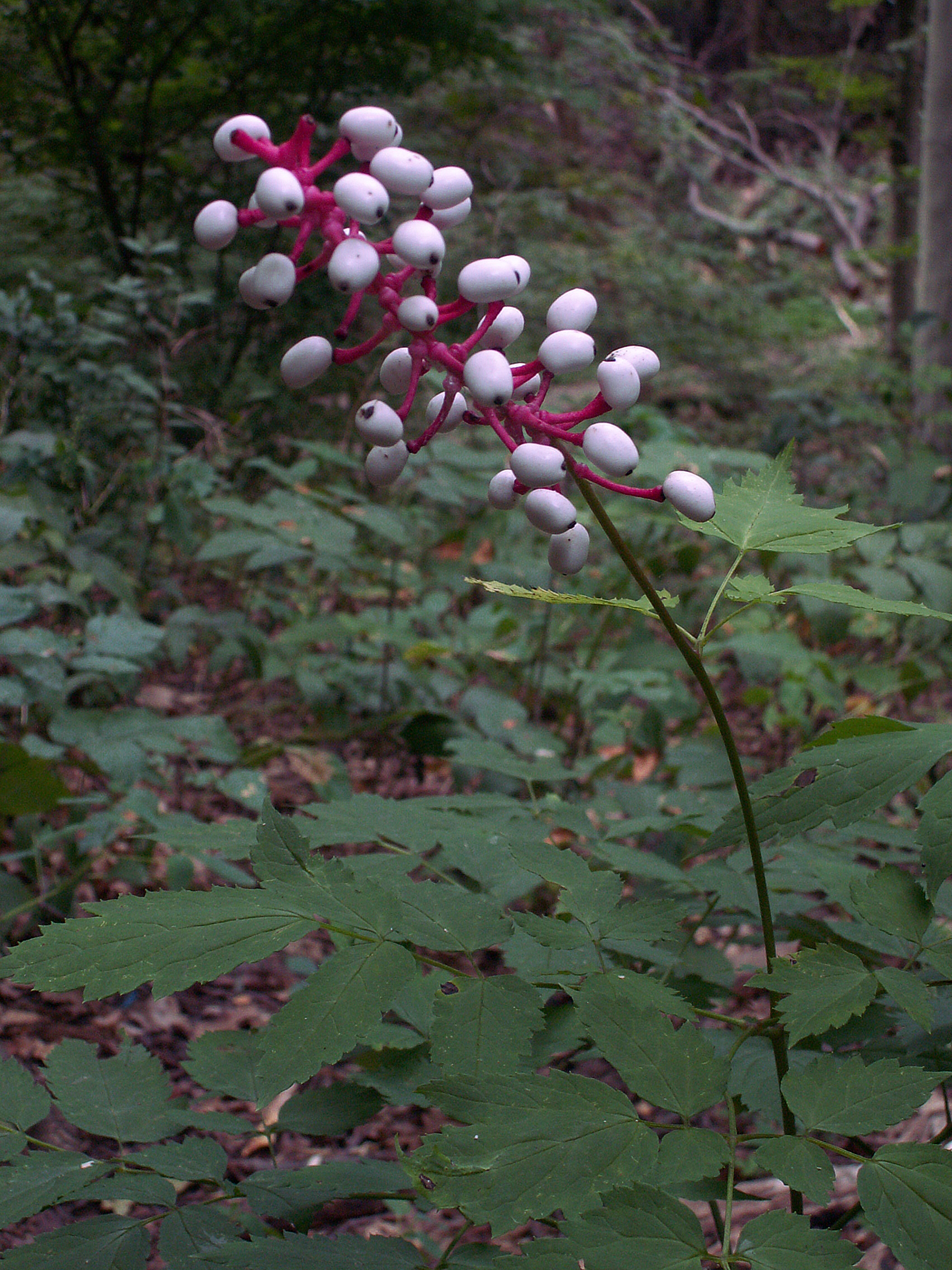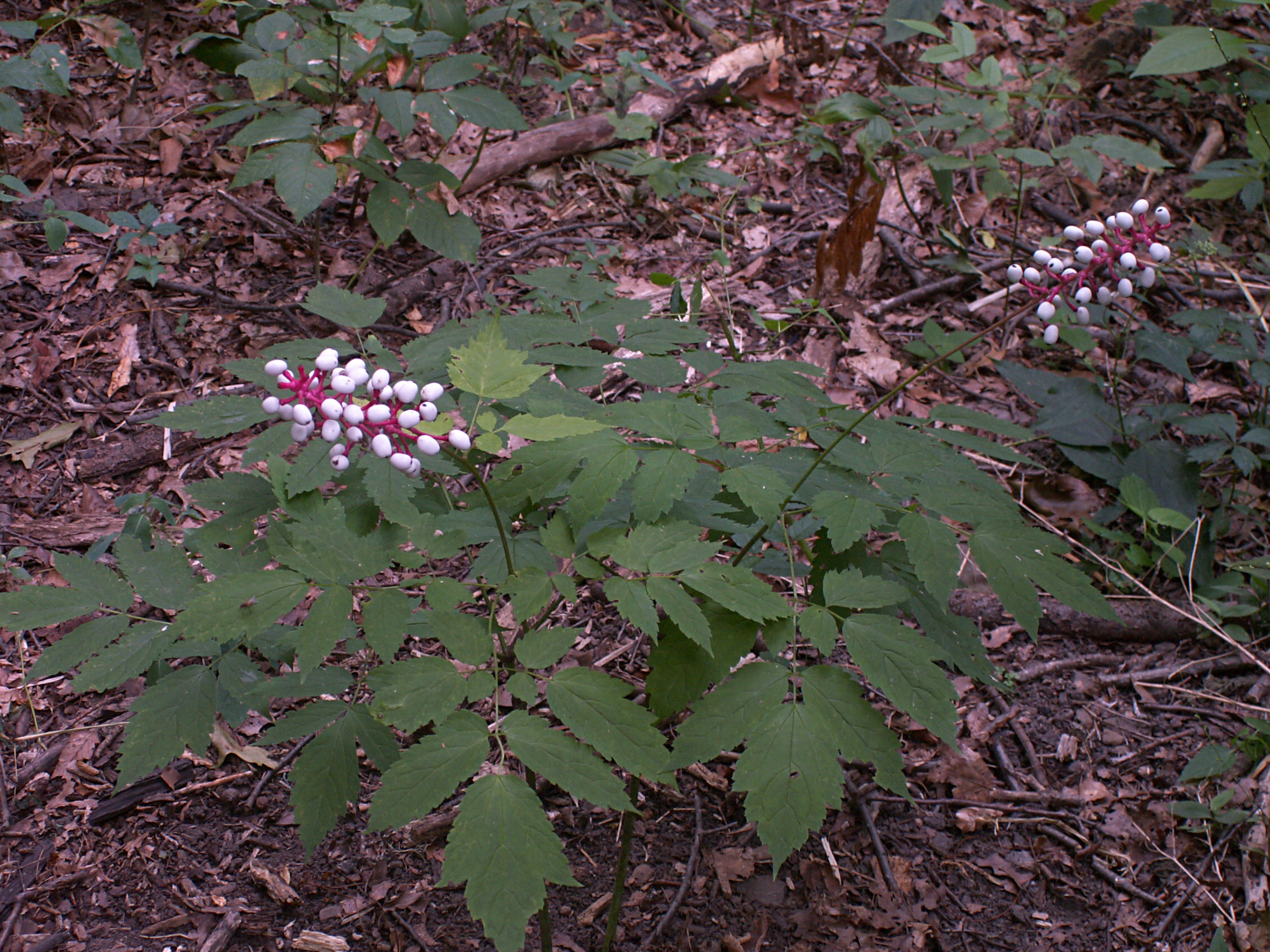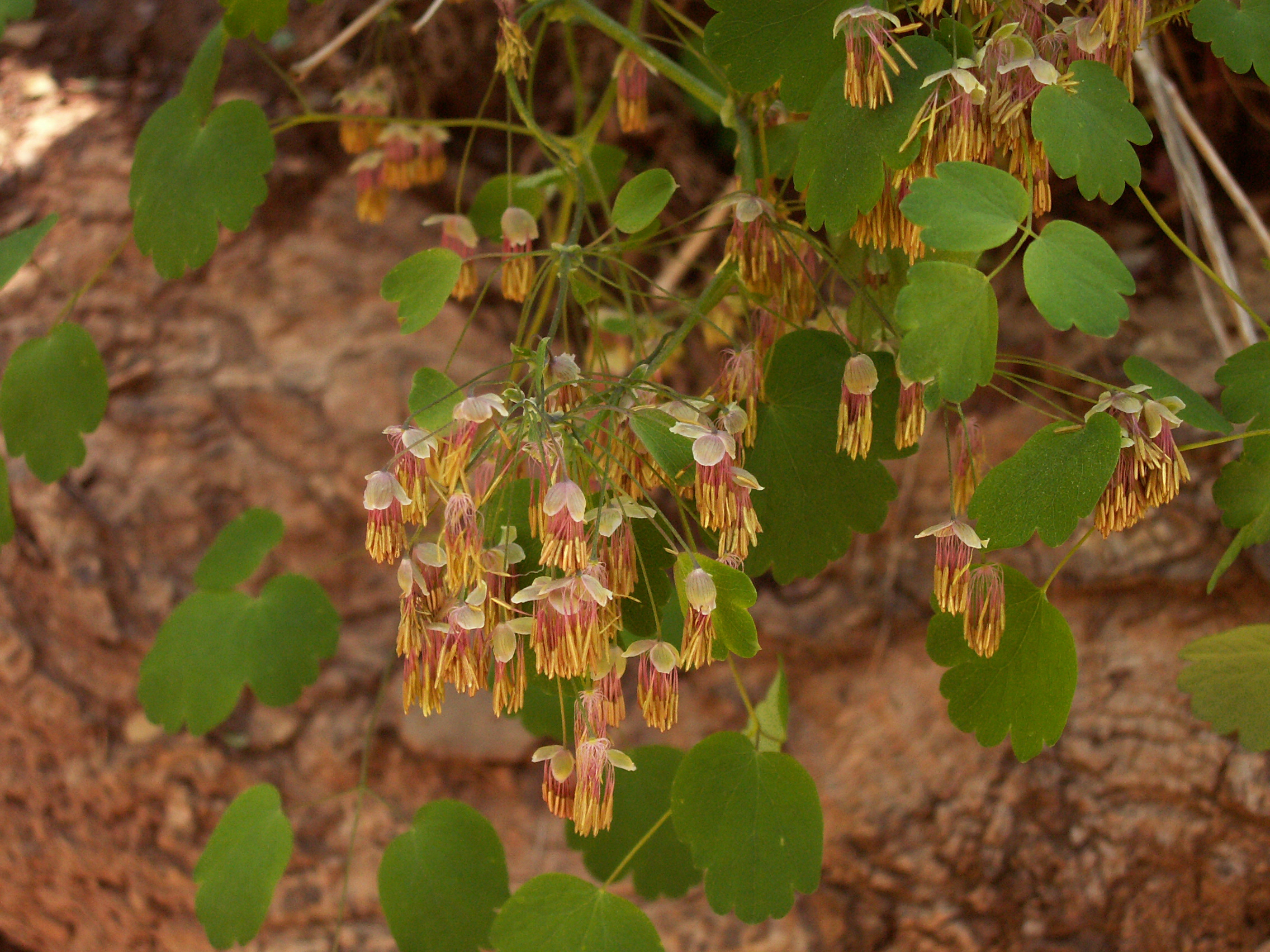
 Long stamens dangle and wave in the breeze, identifying this this as a male plant. As the species name implies, this species has dioecious flowers (from Greek meaning “two houses”): that is, it bears male and female flowers on separate plants. The female flowers are little upright greenish clusters, but the male flowers are more common and more charming. In spite of the common name, Early Meadow Rue seems to prefer woods to meadows; this one was growing on a rocky hillside in the Squaw Run valley in Fox Chapel, where it was blooming at the beginning of May.
Long stamens dangle and wave in the breeze, identifying this this as a male plant. As the species name implies, this species has dioecious flowers (from Greek meaning “two houses”): that is, it bears male and female flowers on separate plants. The female flowers are little upright greenish clusters, but the male flowers are more common and more charming. In spite of the common name, Early Meadow Rue seems to prefer woods to meadows; this one was growing on a rocky hillside in the Squaw Run valley in Fox Chapel, where it was blooming at the beginning of May.
Gray describes the genus and the species:
THALÍCTRUM [Tourn.] L. MEADOW RUE. Sepals 4-5, petal-like or greenish, usually caducous. Petals none. Achenes 4-15, grooved or ribbed, or else inflated. Stigma unilateral. Seed suspended. — Perennials, with alternate 2-3-ternately compound leaves, the divisions and the leaflets stalked; petioles dilated at base. Flowers in corymbs or panicles, often polygamous or dioecious. (A Greek name of an unknown plant, mentioned by Dioscorides.)
Flowers dioecious or polygamous.
Achenes sessile or subsessile, thin-walled, the ribs often connected by transverse reticulations; leaves 3-4-ternate.
Filaments capillary, soon drooping; petioles of the stem-leaves well developed; vernal.
T. dioicum L. (EARLY M.) Smooth and pale or glaucous, 3-6 dm. high; leaves (2-3) all with general petioles; leaflets thin, light green, drooping, suborbicular, 3-7-lobed; flowers dioecious; sepals purplish or greenish white. — Rocky woods, etc., centr. Me., westw. and southw., common. Apr., May.
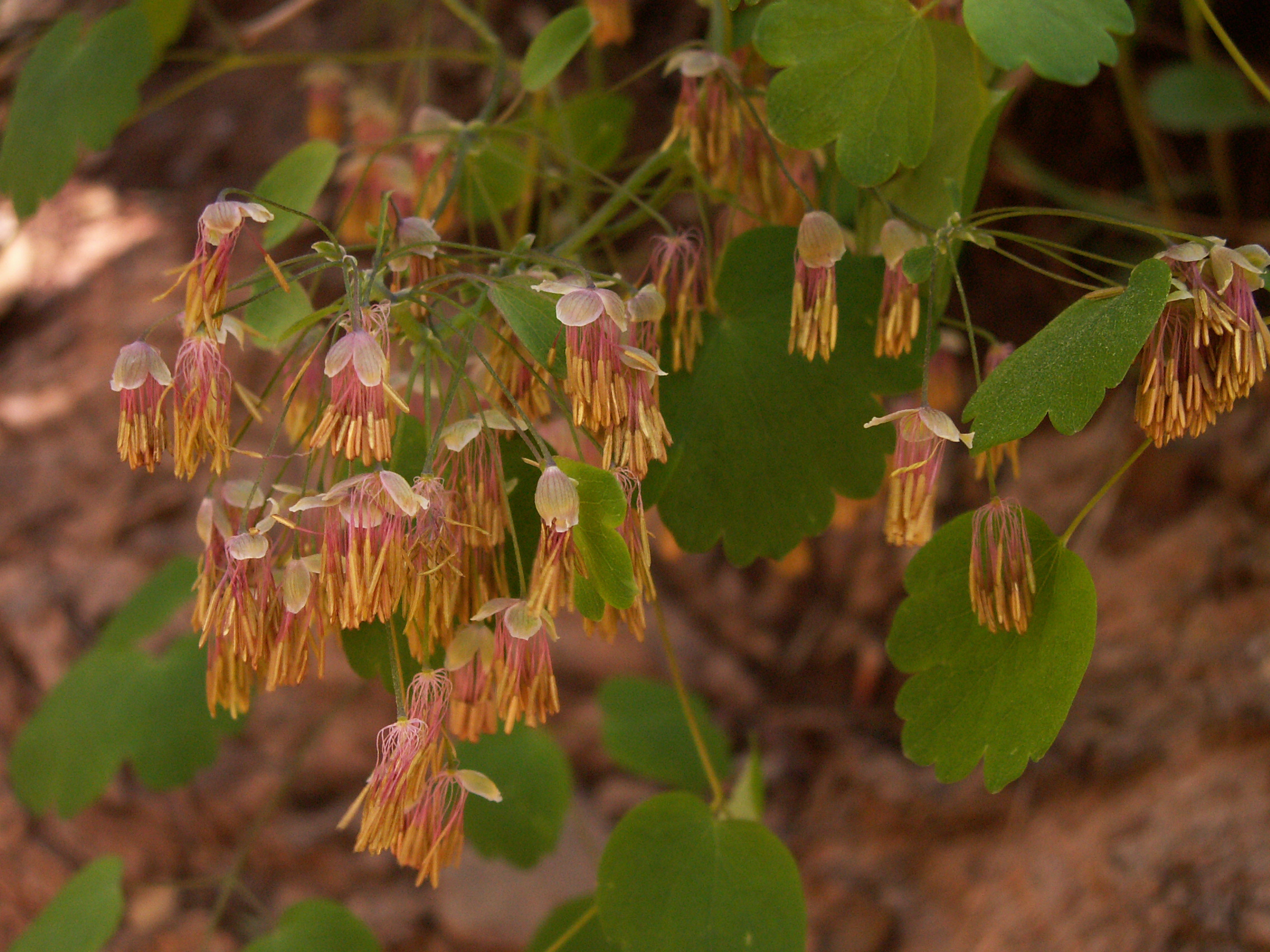
Ferdinand Schuyler Mathews gives us this description in his Field Book of American Wild Flowers:
“A beautiful but not showy, slender meadow rue with the staminate and pistillate flowers on separate plants. The bluish olive green leaves lustreless, compound, and thinly spreading; the drooping staminate flowers with generally four small green sepals, and long stamens tipped with terracotta, and finally madder purple. The pistillate flowers inconspicuously pale green. An airy and graceful species, common in thin woodlands. 1-2 feet high. Me., south to Ala., and west to Mo., S. Dak., and Kan.
–
Ellen Miller and Margaret Christine Whiting give us this fuller description in Wild Flowers of the North-Eastern States (1895):
“Found in rocky woods and hillsides during April and May.
“The branching leafy stalk grows from 1 to 2 feet high; smooth, round, and fine of fibre though strong; in color, green.
“The leaf is 3 or 4 times divided, terminating in groups of 3 leaflets on short slender stems; the leaflets are small, rounding, slightly heart-shaped at the base, and their margins are notched in rounded scallops; the texture is exceptionally fine and thin, the surface smooth; the color, a fine cool green.
“The flower is small and composed of 3 or 4 or 5 little, petal-like, pale green calyx-parts. Different plants bear the pistils and stamens; the flowers of the former are inconspicuous and sparse in comparison with those of the stamen-bearing plant: from these the many stamens, pale green faintly touched with tawny at the tips, droop on slender threads like little tassels. The flowers grow in loose clusters, on branching stems that spring from the leaf-joints.
“The Early Meadow Rue is unobtrusive in color and form, but most graceful in gesture, and fine in the texture and finish of all its parts; the leafage has a fern-like delicacy, and the flower tassels of the stamen-bearing plant are airily poised.”

